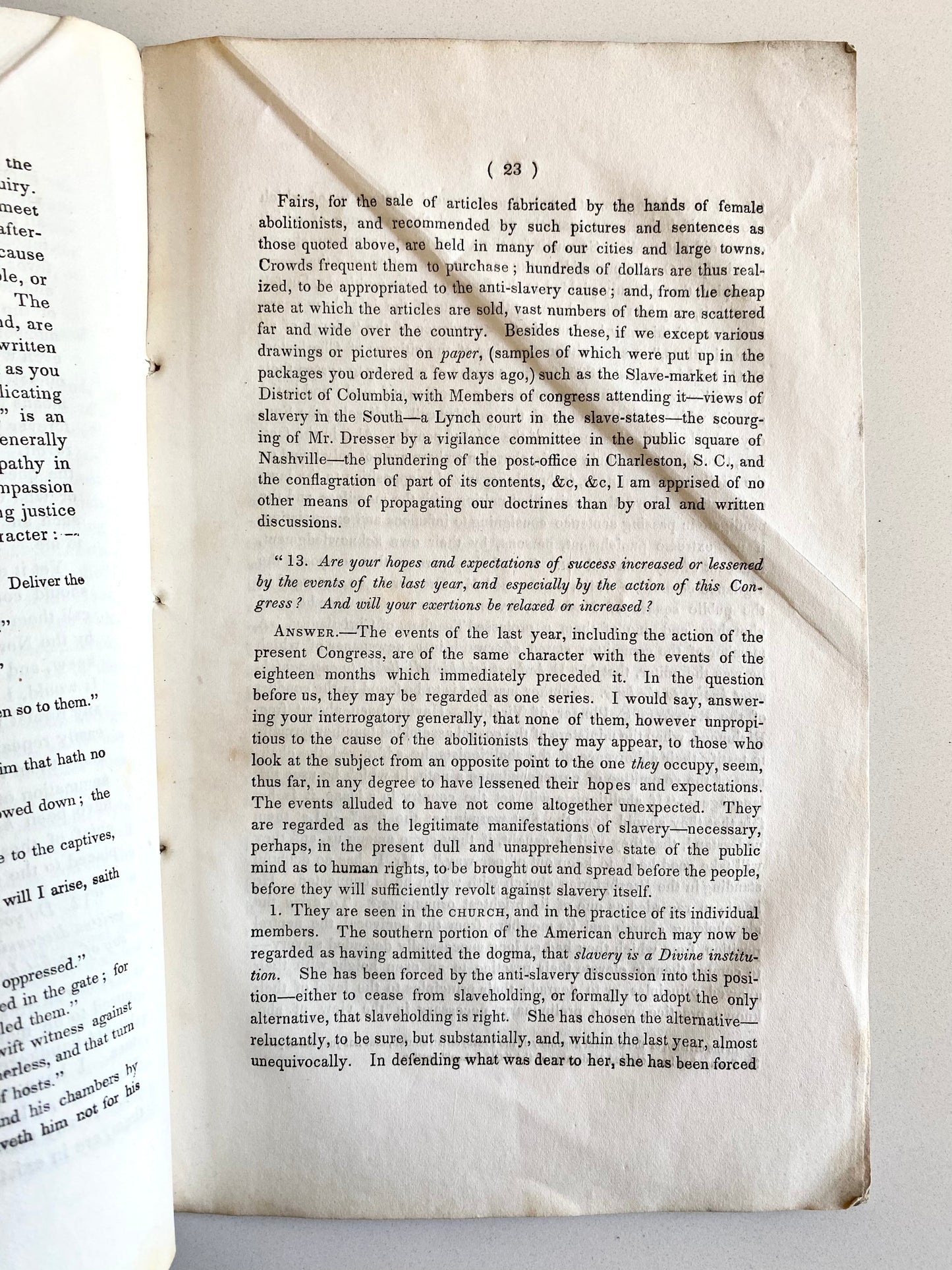Specs Fine Books
1838 ANTI-SLAVERY EXAMINER. Female Abolitionist, M. W. Chapman's Copy!
1838 ANTI-SLAVERY EXAMINER. Female Abolitionist, M. W. Chapman's Copy!
Couldn't load pickup availability
Abolitionist, Maria Weston Chapman’s copy of an important Anti-Slavery document detailing the “conversion” of a former slaveholder from Kentucky, who went on to become one of the leaders of the American Anti-Slavery Society, and his response to questions from an influential South Carolina pro-slavery advocate regarding the “intentions” of the anti-slavery society [I sort of feel like the name says it all, but perhaps it was unclear to the Gentleman of S.C.].
Birney had inherited enslaved African Americans, but became increasingly uncomfortable with the arrangement. He was at first a proponent of Colonization in Liberia, but ultimately sold the estate, freeds his slaves, moved to the North, and became a full-throated abolitionist. His decisions, at great personal cost, gave him a sense of moral authority, even with many Southerners. This of course signaled him out for special vitriol from those whose wealth was dependent on Birney failing to persuade others.
Elmore, Honorable F. H. [Of the South Carolina Delegation in Congress] and James G. Birney [One of the Secretaries of the American Anti-Slavery Society]. The Anti-Slavery Examiner. No. 8. Correspondence between the Hon. F. H. Elmore and James G. Birney. New York. Published by the American Anti-Slavery Society. 1838. First Edition. 68pp.
Maria Weston Chapman [1806-1885] was one of the most significant and early female leaders of the abolitionist movement. She was elected to the executive committee of the American Anti-Slavery Society in 1839 and served as the editor of The Non-Resistant, an abolitionist journal. The title of the journal was a bit misleading; Chapman and her husband, Henry, were abolitionists after the Garrionian model, demanding immediate, uncompromising abolition and espoused come-outism, which was a way of publicly forcing influential persons to make a stand for or against the cause.
She was the leader of the 1835 Boston Anti-Slavery Bazaar, which had been founded by Lydia Maria Child and Louisa Loring the year before. She was perhaps the most significant fund-raiser for the abolitionist movement from 1835 through until 1865. She was on the Committees for the Massachusetts Anti-Slavery Society, New England Anti-Slavery Society, the American Anti-Slavery Society, wrote the annual reports for the Boston Female Anti-Slavery Society, published anti-slavery tracts, edited The Liberty Bell annually in support of abolition, was editor of The Liberator in Garrison’s absence or when he was too busy to fulfill the role, etc.,
Boldly inscribed at the head of the title page, M. W. Chapman.
A good copy with some stains, foxing, and tears to covers as shown; generally handled throughout, but sound and clean. A wonderful association copy.
Share














